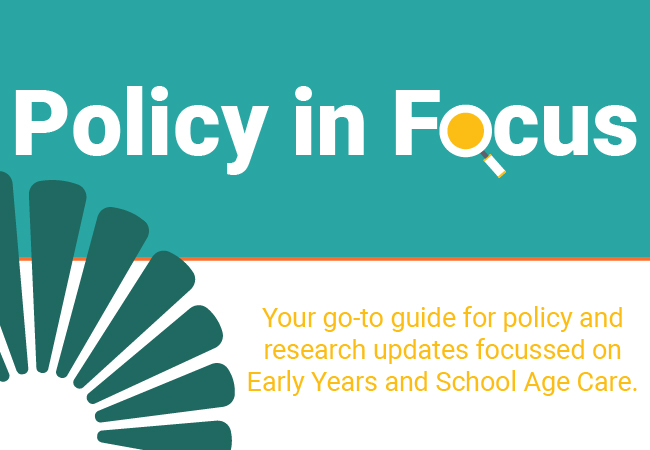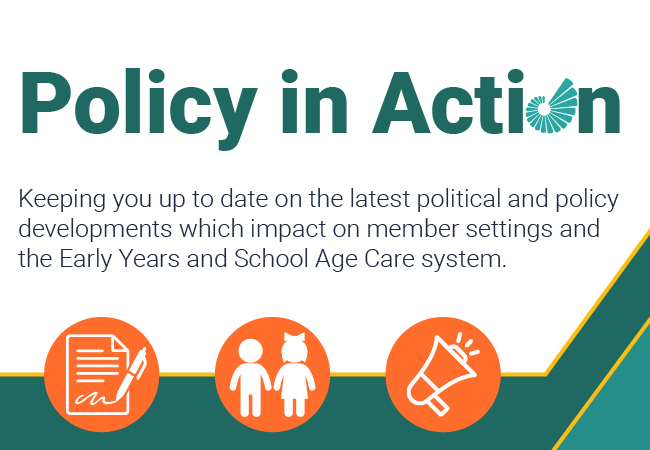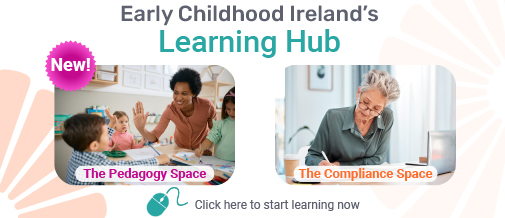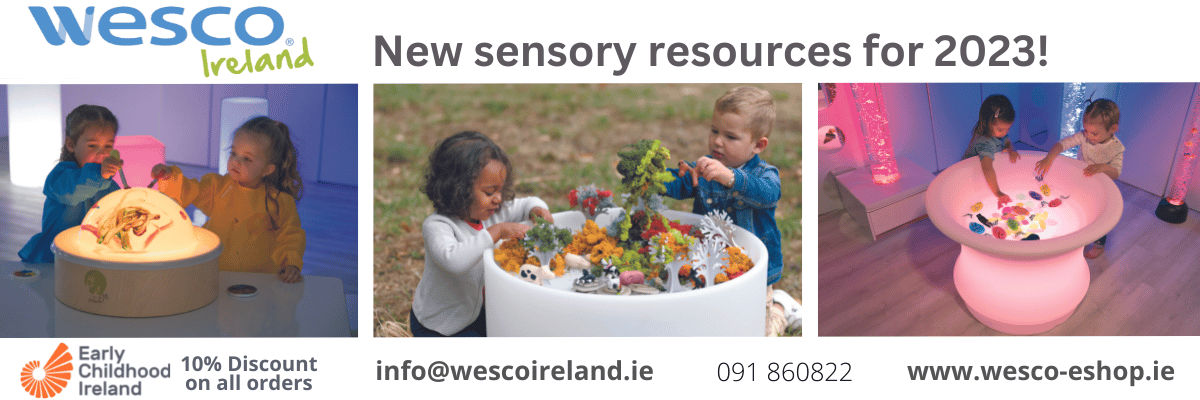Looking in on Play
In my previous post Stick to Play, we looked at how children play and how simple loose parts provide opportunities to be creative and imaginative.
Just look at the following scenarios and you will see that through all these activities children are building their identities as capable participants, adventurers, possible Mams and Dads and big sisters/brother, rescuers and ambulance drivers, defenders of the realm and justice crusaders.
Physical play is foregrounded
The children sit on the vehicles and toboggin down the slope. It is experienced by every sense in the body. There is an element of balance, direction, speed and risk in this play that really stretches the thinking and physical skills of these children. Their sounds and conversation imply some story is going on.
Role play is foregrounded
There has been an accident and the baby has been injured. The ambulance brings baby and parents to the hospital. Hats, steering wheel and doll are very useful props here. They support the drama rather than dictating it. They help the children to hold in mind a shared sense of what is happening. The story belongs to the children.
Fantasy play is foregrounded
The boys have created a small world scenario with blocks and a garage/parking lot toy and some animals. The speed of action and their responses are remarkable and they loved it – a real male bonding exercise that generated a strong sense of connection and friendship.
Toy provision
You may not have much say in the toys that come in your toy pack but it’s certainly a welcome gift. The suggestion is that they will be sensorial toys but, as the stories above demonstrate, the term sensorial can be interpreted very broadly – and include the 5 senses, the idea of making shared sense and that sense of identity and connection that is critical to all learning. So this new toy initiative prompts us to rethink the kinds of toys that support children’s play stories. I’m not going to go through a huge list here but I’d like to suggest the following as guidelines.
Physical play – with a focus on big movement and exertion. It happens best outdoors so the first thing we need is the right clothing – for wet/cold weather (we live in Ireland) or water/messy activities – overalls, wellingtons and hats are a great help. Children may bring their own but a reserve supply is very important. Then think about the kinds of big action areas you want to create. A sand and water area is a must – it provides for so much digging and pouring and making and role play. Think about equipment that encourages children to run, jump, swing, crawl, balance – some of this means that you purchase planks or the makings of a tunnel or cave or materials to make dens or tents or fencing to create enclosed private ‘anything-you-want-it-to-be’ spaces. Wheels, barrows, buckets and spades, ropes for pulleys, blocks for structures and of course animals, vehicles and dolls all serve as important props for story making. A good weighing scales, measuring jugs and meter-long planks help to generate the concepts and language of numeracy in a way that makes sense.
Role play:
Remember your own play as a child. Think about the role of toys and equipment. Think about all the things you made and the satisfaction of that – and make sure children still have such opportunities in your setting. Think too about treasured toys. The beauty of toys or equipment in a group setting is that they can help children to hold a role in mind. The person with the car keys or the wheel is the driver, the one with the cashier-till is the shopkeeper and the doctor wears a stethoscope or carries a doctor’s bag. Of course, it’s good for children to be creative and use something to symbolise these things – but some pieces of equipment make it easier to communicate the role to everyone involved and allows children to get on with the story making. So think about the most common roles that children enact in your setting and create prop boxes for the roles.
Scenarios
Linked to roles are scenarios. Mams and Dads do housework, look after children, go shopping and go to work. Sometimes trades people come to fix things, families go on outings, emergencies happen in the home. Hospitals, shops, schools, cinemas, restaurants, offices, hairdressers, building sites, buses/trains etc. are all part of the community life around the home. Further afield, children go on holidays, blast off into space, climb mountains, perform on stage, capture the criminals and rescue the endangered, the sick and the lonely. Again, think about prop boxes that can support this story making.
Sometimes, children use characters to play out scenarios. A nice set of doll characters is desirable – preferably dolls that don’t come with a script like Barbie and Blue Ranger – but rather can be imbued with personalities and roles – and that are aesthetically pleasing. Equally a decent set of farm and wild animals, dinosaurs, vehicles and maybe furniture pieces contribute to common stories.
Here I want to make a case for wooden blocks. They are beautiful, invaluable for play and if you buy a good set – they’re a lifelong investment. Depending on your space, you may be able to house big blocks or small blocks. The ECI shop has a nice set of small blocks on sale – I’d recommend 2 sets for a group setting -so that children can come together and make big, exciting structures and learn the power of collaboration. We also have a member discount arrangement with Jaggo (www.Jaggo.ie ) if you can afford to buy some of the wonderful and beautiful Community Playthings blocks.
With blocks, children can make all sorts of small world habitats – houses, farms, garages, railroads, caves, castles and lunar landscapes. Add a few branches, rocks, pebbles, fabrics and plants and the possibilities expand enormously.
Fantasy play
Then we’re into the realm of fantasy play. Corsaro (2003) describes fantasy play as roles that children cannot reasonably be expected to encounter in real life but as you know and Paley demonstrates (1986: 79) with quotes from Mollie –‘She’s Supergirl and Emily is the mother and Mollie is the big sister and Wonderwoman’ – children constantly integrate real life and fantasy. Nevertheless, fantasy play brings us beyond the real world experience of children and into the imaginary world of literature and theatre and wild thinking. Dinosaurs, trolls, royalty and raging dragons, flying carpets and superheroes feature here. It’s children’s forte – the world of action and improvisation – often played out in small world scenarios but sometimes through the children’s own role play. Kieran Egan asks ‘Did you come by car or magic carpet today?’ – suggesting that educators need to come to work ready for this kind of imaginative play. Hannah Lefeuvre, on a visit to Early Childhood Ireland, said that children these days are starved for opportunities to exercise their imagination – and need educators who can help. She suggests ways of bringing children on imaginative journeys.
And among the props she uses are fabrics and flashlights, newspapers, hats and capes.
Finally…
What all this suggests is that we need to rethink the kinds of toys we offer children and choose toys that support their play stories and activities, while not depriving them of the pleasure of finding and making and symbolising. Remember that materials are often prompts and provocations that generate play – so they’re important. As prompts and generators of ideas, books are also a very important contributor to children’s play. They’re good too for time out from the often-hectic world of play – as are table top toys – and quiet corner activities. I still prioritise the play discussed above for lighting up the brain and generating enthusiasm for life.
Remember, thinking, action, relating and feeling are equally important in early childhood. Choose materials that appeal to the whole child – not just the ‘educational toys’ that are designed to make children think and perform in predetermined ways. Choose materials that exercise the senses of the body, and the sense making of the mind, heart and spirit – that generate collaboration, conversation and connections – and are beautiful to touch, appealing to the imagination, and usable and durable, like these links.
Equipment that generates: collaboration, conversation, connection.
Making memories
We are in the process of creating memories with children. Memories are lodged in the body, heart and mind and generated by the emotional experiences of acceptance and rejection, success and failure, connection, love and beauty. Memories need to be recalled at times so that they inform our lives in a positive way. Think about capturing children’s experiences with reflective conversations, documentation and images. If you don’t have one already – add a camera and a journal to your list.
I really recommend that you join our Outdoor Play Facebook Page https://www.facebook.com/groups/1459808327624591/
and look at our annual award winners for more ideas https://www.earlychildhoodireland.ie/work/quality-practice/awards/
and follow our Inspired Practice exemplars on our ECI Facebook page https://www.facebook.com/earlychildhoodireland/
They are brimming with ideas from great educators in Irish settings – ideas that work.
And here are some websites to consult:
ReCreate: www.recreate.ie
Jaggo: www.jaggo.ie
WESCO: www.wescoireland.com
Clever kids: www.cleverkids.ie









